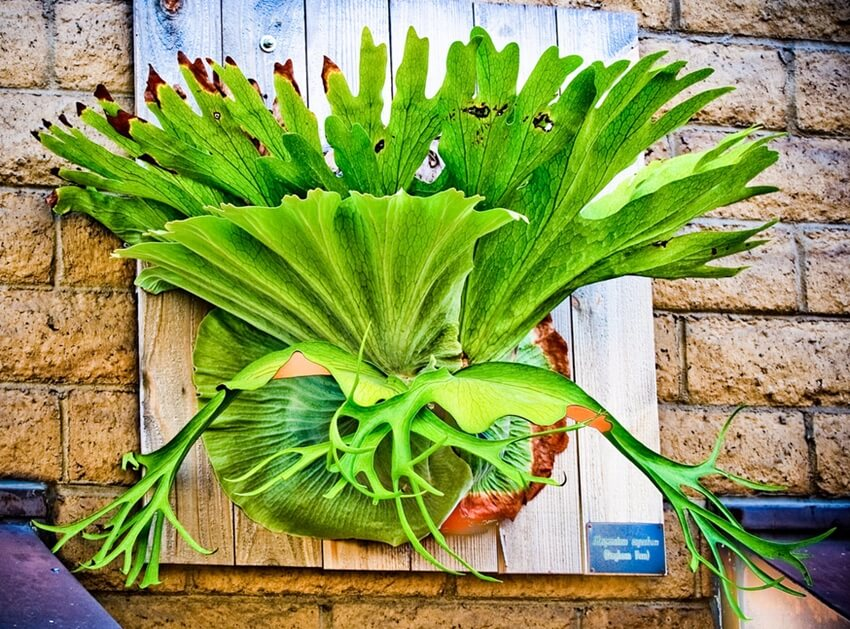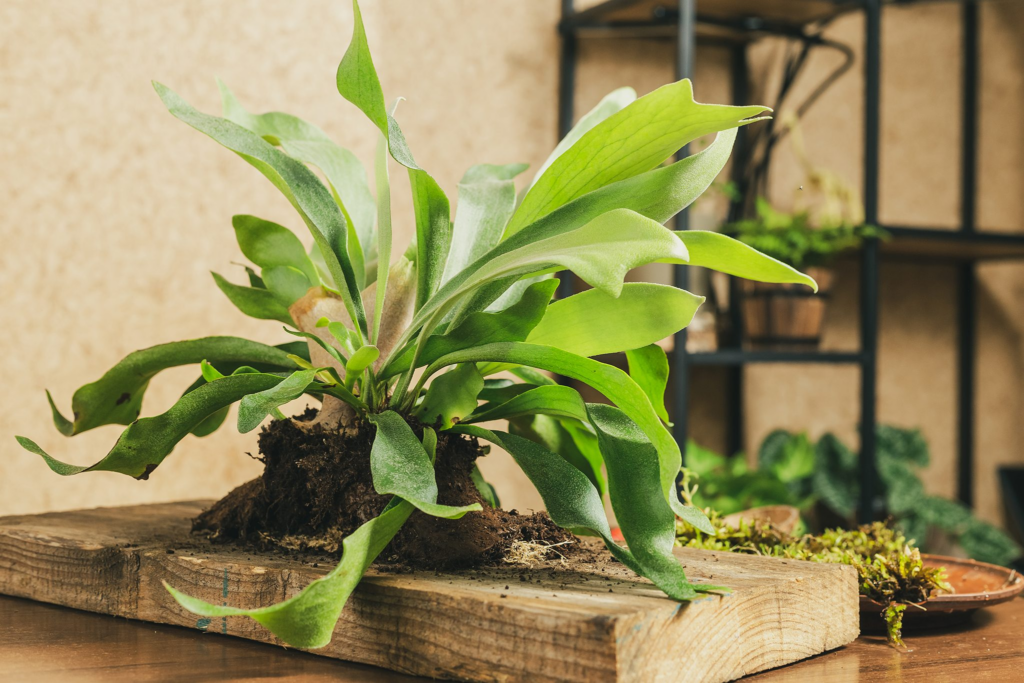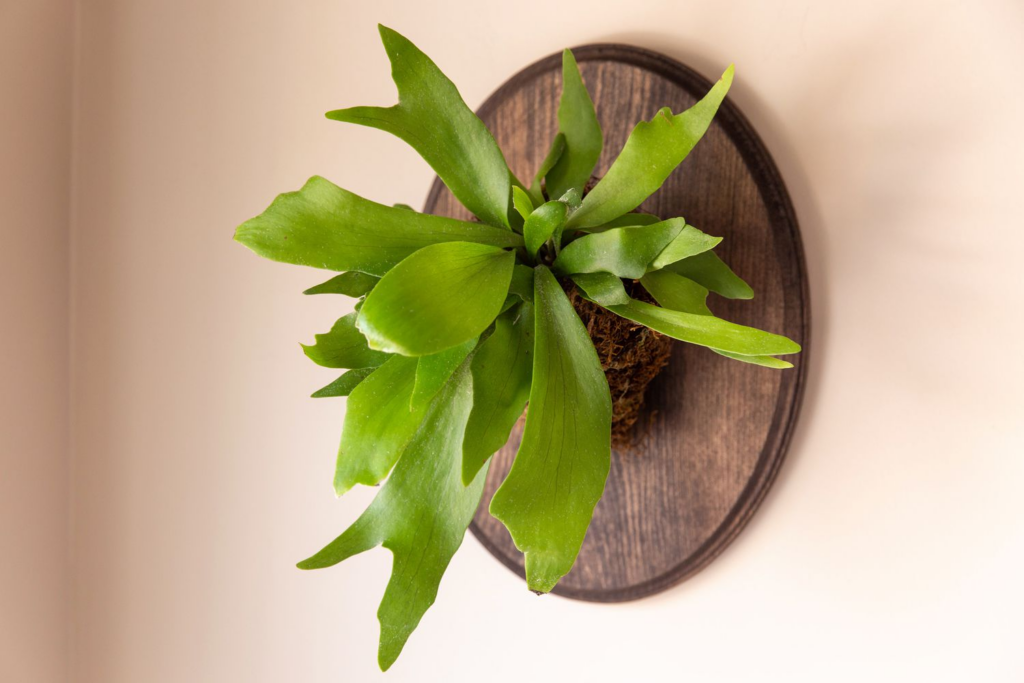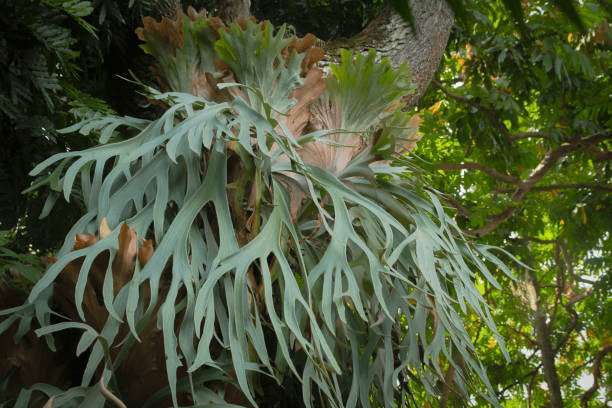Staghorn Fern – Varieties, Species, and Types
I was thinking of adding a plant that I can keep indoors and outdoors as well. While searching, I came to know about staghorn ferns, which I found to be the perfect match. Do you want to know why? Let me explain.
Staghorn ferns are strange, exotic-looking plants that will certainly draw attention. Not only this, but they are also available in several different hybrids and species variants. Interesting, right?
Don’t worry; here I have explained the different varieties, species, and types of staghorn ferns from which you can decide which one to add to your garden. So, let’s start to learn about them in detail.
All About the Staghorn Fern
Ferns are among the oldest ancient plants, with over 12,000 different kinds. Unlike other plant species, ferns do not reproduce by flowers or seeds; instead, they release minute spores into the air (similar to mosses and mushrooms), which ultimately grow into new plants. There are various varieties and species of Staghorn Fern explained below.
Staghorn ferns are one of the ferns that are adored by every farmer. Ferns will not be usual in every plant. These functions are also called crown staghorn or elkhorn fern. They are considered tropical plants that originated from South America, South Asia Africa, Africa, Australia, and New Guinea.
In this uppermost leaves are called shields. They are one of the popular choices, especially in the botanical gardens and people tend to grow them in the hanging baskets in their homes. Various varieties of these ferns can be grown in your home garden. So, you can choose the variety as per the requirements of your garden.

Choosing Various Types of Staghorn Fern
Staghorn ferns, like most bryophytes and many orchids, are epiphytes. This means that they prefer to grow in trees above ground and do not require soil contact. Instead, they take in water and minerals from the air, as well as from water or leaves that fall upon their fronds.
Most are tropical species, with some hailing from Southeast Asia, Australia, and the Pacific Islands, while others are from South America or Africa. As a result, the majority of staghorn fern variants need particular settings and care.
When choosing a staghorn fern species, keep in mind your degree of experience, the moisture level in your house, and the amount of space you have available. Because of the differences in the kinds, some are simpler to cultivate at home than others. If you’re going to grow the fern outside, make sure you have a shady area in mind, such as a tree or a covered porch.
There are a few exceptions to the rule that most species should not be exposed to temperatures below 13 degrees C. Staghorn fern care guidelines change according to the kind, so be careful to find out what yours requires.

Anatomy of the Staghorn Fern
The anatomy of the staghorn fern varies from that of many other popular houseplants, including other ferns, which is one of the reasons why it appears difficult to care for. Ferns are among the oldest ancient plants, with over 12,000 different kinds. Unlike other plant species, ferns do not reproduce by flowers or seeds; instead, they release minute spores into the air (similar to mosses and mushrooms), which ultimately grow into new plants.
The leaves of ferns are known as fronds, and there are two varieties of staghorn ferns. The first and most noticeable is the “antler” frond, which is a huge, bifurcated leaf that grows out of the middle of the plant and gives it its name because it resembles deer or moose antlers. Spores form on the bottom parts of these fronds and resemble brown fluff; do not remove the spores! This is a big no-no when it comes to its maintenance.
The shield frond is the second form of a staghorn fern frond. The plant’s base is surrounded by circular, rigid plate-like leaves. Their job is to defend the plant roots while also absorbing water and nutrients.
These fronds start green before becoming brown and drying up. This is a perfectly typical aspect of its life cycle, and it’s one of the most popular staghorn fern care myths. A brown shield leaf does not indicate that your staghorn fern is decaying, and you should never remove dry shield fronds!
The root ball is the last portion of them. Because stags are epiphytes, their roots are small and aid in the plant’s attachment to its environment. They require a lot of drainage since their roots are so small, and they’re prone to root rot.
Now that you know a little more about these planted beauties, here are some of our finest staghorn fern care tips.

Staghorn Fern Species and Varieties
1. Platycerium bifurcatum:
The most common staghorn fern for home cultivation is Platycerium bifurcatum. It’s also the easiest to look after, making it a wonderful option for newbies. This species may grow to be rather huge, so ensure you have a sturdy mount and enough room to support it.
Unlike other staghorn ferns, this species can withstand a temperature dip to 30 degrees F for a short period (-1 degree C.). There are several types to choose from.
2. Platycerium superbum:
Platycerium superbum is hard to grow and locate, but it has a beautiful look that makes it popular among fern enthusiasts.
The mount develops huge, light-green fronds that reach upward and downward. These ferns require a high level of humidity, however, they can be easily harmed by overwatering.
3. Platycerium veitchii:
Platycerium veitchii is a silvery-colored semi-desert plant native to Australia. It’s a simple plant to grow and can withstand temperatures as low as -1 degrees C. This species prefers a lot of light.
4. Platycerium hillii:
Another fantastic fern for beginners is Platycerium hillii. It is endemic to Australia and New Guinea and has dark green leaves.
5. Platycerium angolense:
Because it enjoys temperatures of 80-90 degrees F (27 to 32 degrees C) and does not withstand conditions below 60 degrees F, Platycerium angolense is an excellent choice for hot places (15 degrees C.).
It is, nevertheless, one of the most challenging ferns to cultivate. It needs frequent watering and a high level of humidity.
How to Care for Staghorn Fern?
Growing the plant is not a difficult task but what is difficult is the maintenance of the plant. So do you know how to care for staghorn ferns? if yes, then is great but if not, then you should know some of the caring things tips for the growth of your plant. They are as follows:
- Sunlight needs
- Water needs
- Fertilizer needs
- Humidity needs
- Temperature needs
- Soil needs
Let’s get started to throw some light on all the segments in more detail.
Light needs
- It requires a good amount of sunlight for its growth. Direct sunlight will harm the growth of the plant.
- So you have to protect your plant in your home from the direct sunlight.
- So it is suggested to provide them with indirect sunlight, so you can place them near the window which is covered with a shield.
- It will not let the direct sunlight touch, the leaves of the plant, and the leaves will be protected.
Water needs
- It requires water every week at the time of the summer season when the plant is growing.
- You have to reduce the level of frequency at the time of winter.
- The climate condition conditions matter a lot when it comes to water and the plant.
- Water your plant more often so that it does not remain dry for long.
Fertilizer needs
- It requires a good amount of fertilizers for its growth.
- You have to provide balanced and water-soluble fertilizer to the plant.
- Keep in mind to fertilize the plant every month so that the plant receives a good amount of nutrients.
- But you have to do so when the plant is in its growing season, that is from spring to summer.
- At the time of the winter, you have to reduce the frequency of fertilizer because the plant is in its dormant period at that time.

Humidity needs
- It requires humid conditions for its growth because it is in love with the high level of humidity.
- To increase the level of humidity in your plans, you can make use of a small humidifier by placing it near the plants.
- Also, you can place the plant in the kitchen or the bathroom as it will help in increasing the level of humidity.
- Also, you can keep misting your plant so that the level of moisture remains maintained in the plant.
Temperature needs
- It requires average indoor temperature so if you are comfortable in your room temperature, then your plants are too.
- Keep in mind that the temperature should not be less than 50°F.
- So it is your responsibility to feed the plant with a good amount of temperature so that you receive amazing results from it.
Soil needs
- They will grow in the moist soil mix that should be nutrient-rich.
- Provide your soil with some addition of peat, compost, etc like some of the organic materials that will raise the nutrients in the soil.
- Nutrients will help in the growth of the leaves and the foliage of the plant.
About the article
Staghorn ferns are strange, exotic-looking plants that, whether presented indoors or outside in a warm-climate garden, will certainly draw attention. The 18 species of the Platycerium genus, as well as several hybrids and variants of those species, are referred to as staghorn ferns. I hope you are clear with the guide.
Thanks for reading! Happy Gardening!


